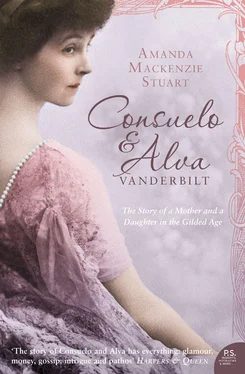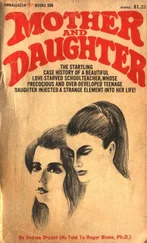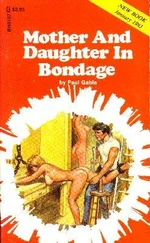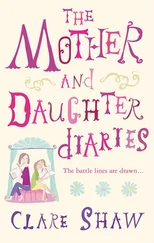Even to those who could take the psychological strain, the interior was almost overwhelming, dominated by spaces intended to dramatise the authority and economic power of the Vanderbilts. The dining room was 80-feet long, 28-feet wide and 35-feet high, had two colossal Renaissance fireplaces and a stained-glass window depicting a scene from the meeting of Henry VIII and Francis I at the Field of the Cloth of Gold. The sweeping grand stairway of Caen stone to the second floor was a tour de force of trophies, fruit, masks and cherubs. The entrance hall measured 60 feet and was lined with carvings and tapestries. The dominant theme may have been illusion and flight from reality but the translation of the remains of France’s ancien régime to this new American interior was real enough. It had all been masterminded by the French firm, Jules Allard et Fils, who would come to specialise in importing architectural salvage, artefacts and paintings directly from the houses of ruined French aristocrats for the houses of plutocratic aristocrats in the United States. The William K. Vanderbilts’ paintings not only included Rembrandt’s ‘Man in Oriental Costume’, and Gainsborough’s ‘Mrs Elliot’, but François Boucher’s spectacular ‘Toilet of Venus’. This came to Alva’s boudoir – indirectly – from the boudoir of Madame de Pompadour; and at least one fine secretaire came from the apartments of Marie Antoinette herself.
As late as 1882, Mrs Astor was still refusing to acknowledge the Vanderbilts formally. Her attitude was increasingly irrational for leaving aside Alva’s claims to southern gentility, Cornelius II had married Alice Claypoole Gwynn in 1867 (whose great-great-grandfather was Abraham Claypoole, a direct descendant of Oliver Cromwell), and in 1881 William K.’s sister, Lila, married William Seward Webb, whose grandfather had been an aide to George Washington. Both William Henry and Cornelius II, head of the family elect, were building fine houses and lived lives of unimpeachable luxoriousness. However, Mrs Astor’s strength of feeling on this matter may have been reinforced by two Vanderbilt upsets in the same year. One came about as a result of William Henry Vanderbilt remarking: ‘The public be damned!’ in answer to a reporter’s question about running a Pennsylvania train for the public benefit. Some maintain that William Henry was simply defending the interests of shareholders as he had every right to do, but he was universally excoriated for this jest, and the image of a Vanderbilt as a boorish robber-baron was successfully dangled before the public once again by his opponents. The scandal surrounding the unfortunate Cornelius Jeremiah was worse. After the Commodore’s death he became obsessed with funding his addiction to gambling. In 1882 he shot himself in the Glenham Hotel in New York, leaving debts of over $15,000. An undignified auction of his belongings compounded the disgrace of a family suicide.
Undaunted, Alva and William K. pressed on with their entrée to New York’s social elite. A charming and energetic couple, about to take possession of a huge and dazzling house which would flatter the ambitions and pretensions of New York’s gratin , they were already being asked to the best parties. In spite of family scandals they were invited to a Patriarchs’ ball in 1882 and another early in 1883. As 660 Fifth Avenue neared completion, they started to plan a house-warming party of their own. The Vanderbilt ball, as it came to be known, has gone down in the annals of party history. In deciding to hold it in March 1883, and to send out 1,600 invitations, Alva and William K. must have calculated that to a very great extent, society’s resistance to the Vanderbilts was already collapsing. They knew that the elite of New York was agog with curiosity over 660 Fifth Avenue; they made sure that society understood that the ball would be like no other in terms of expense and display; and Alva shrewdly reduced the social risk to invitees (and herself) by giving the party in honour of her old friend, Consuelo Yznaga, now Viscountess Mandeville, knowing full well that the presence of a real aristocrat would overcome residual hesitation – a manoeuvre she would repeat in the future. This left the problem of Mrs Astor.
The story goes that Alva used the ball to outwit Mrs Astor, who had not, in March 1883, been persuaded to relax her Vanderbilt-denying ordinance. This may have been because of recent scandals; possibly because she still thought the Vanderbilts remained a symbol of the dangers of vulgar wealth; and probably because she had anathematised them in the past and was in no hurry to back down. Her daughter, Carrie, on the other hand, was closer in age to the William K. Vanderbilts and enjoyed parties given by younger ‘swells’. She looked forward to being asked to the Vanderbilts’ house-warming ball, and even started to rehearse quadrilles with her friends. It then transpired that there could be no invitation because, according to the etiquette of the day, Mrs Astor had to call on Mrs Vanderbilt before Alva could invite Miss Carrie Astor to the ball. Such was the distress of Miss Carrie Astor that Mrs Astor’s maternal love overcame her pride. She relented, made the call and an invitation was forthcoming.
This story has long been called into question. There is no doubt that the ball was planned with an element of calculated risk and that Alva wished Mrs Astor to grace it with her presence. There is no doubt that Mrs Astor only called on Alva for the first time shortly before the ball. However, Alva and Mrs Astor sat together on the executive committee of the Bartholdi Pedestal Fund, 30 and the Vanderbilts had already attended two Patriarchs’ balls, which would have been impossible without Mrs Astor’s implicit approval. It is more than likely that if there had been no ball, Mrs Astor would have called on Alva soon after she moved into her new house – at the moment when, as one wag put it, the Vanderbilts had finished Vanderbuilding. The ball simply acted as a catalyst for Mrs Astor’s public acknowledgement as Alva hoped it might.
Once the invitations had been sent out, it is perfectly possible that Carrie Astor appealed to her mother to speed things up and that Ward McAllister sensed that it would be better for Mrs Astor to acknowledge the Vanderbilts formally if she wished to stay abreast of the Zeitgeist and avoid looking foolish. The story that Alva deliberately outwitted Mrs Astor is too crude, however. In one sense she had done that long before when she started to plan 660 with Richard Morris Hunt. The end result was the same, however. It only took a brief glimpse of the interior of 660 Fifth Avenue to reassure the Queen of Society that Mr and Mrs William K. Vanderbilt were fine upstanding examples of the civilised ‘money power’ 31 which she and Ward McAllister so wished to encourage. ‘We have no right,’ she commented in 1883, ‘to exclude those whom the growth of this great country has brought forward, provided they are not vulgar in speech or appearance. The time has come for the Vanderbilts.’ 32
Proust’s remark that parties do not really happen until the day afterwards when the uninvited read about them in the newspapers is only partly true of the Vanderbilt ball. This party was a wild success before it ever took place. Not only did Mrs Astor finally capitulate, but the ball was the principal subject of discussion for weeks beforehand among the prospective guests. It was a fancy-dress ball, of course, in the spirit of make-believe and flight from reality that characterised the house; and the elite of society happily collaborated. ‘Every artist in the city was set to work to design novel costumes – to produce something in the way of a fancy dress that would make its wearer live ever after in history,’ 33 wrote Ward McAllister with a characteristic sense of proportion. Alva was deeply gratified by the time and energy expended by hundreds of guests on their outfits, which took weeks of work by New York’s best dressmakers and couturiers. The degree of focus, effort and cost expended could only be seen as a compliment to the new generation of civilised Vanderbilts and marked out their elevation to the apex of society just as clearly as any endorsement from Mrs Astor.
Читать дальше












